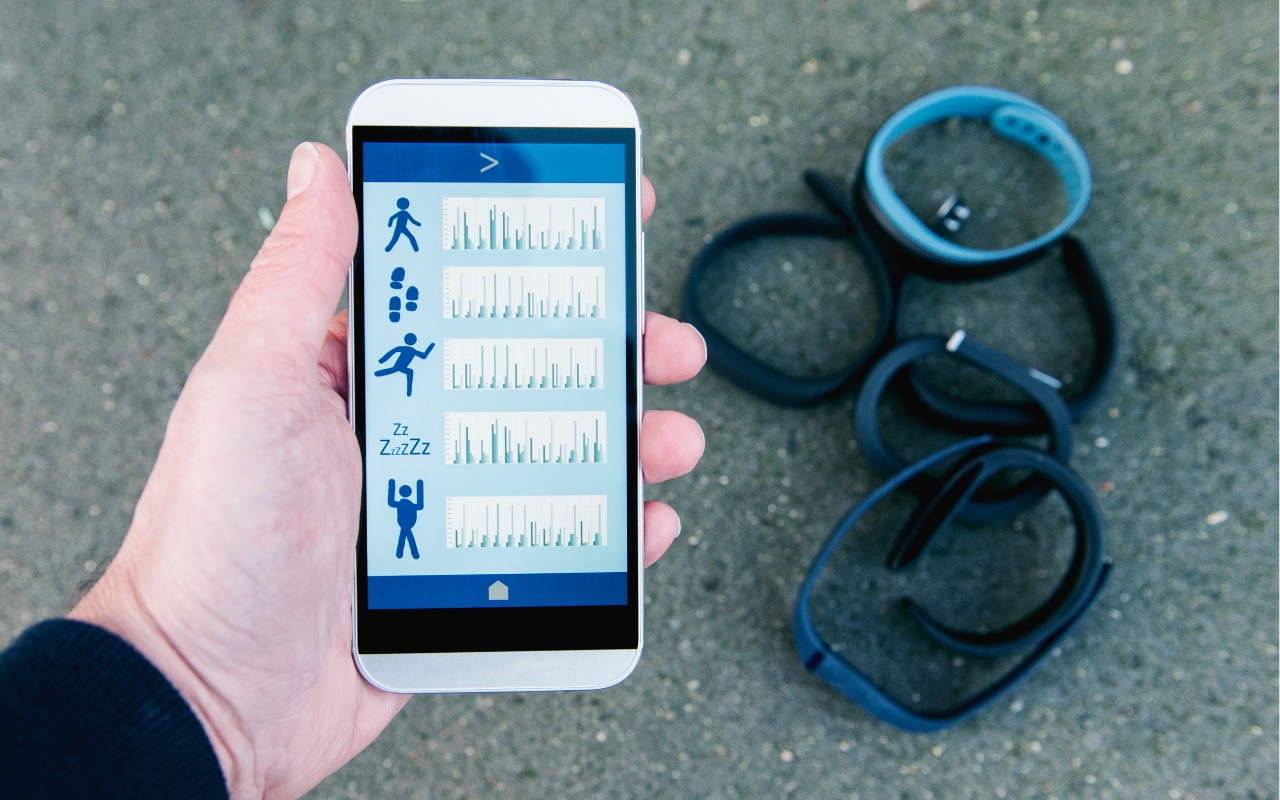Fitness
How do I track my fitness progress?
Published
2 years agoon
By
mbkteam
Embarking on a fitness journey is a commendable decision that promises numerous physical and mental health benefits. However, staying motivated and ensuring continuous improvement can be challenging without a structured approach to tracking progress. This comprehensive guide will delve into the importance, methods, and benefits of tracking your fitness progress, ensuring you stay on the right path toward achieving your goals.
Understanding why and how to track your progress can transform your fitness journey from a grind to a series of motivating milestones. This article explores the best practices for monitoring progress, offering practical tips and insights to help you stay committed and see tangible results.
Importance of Tracking Fitness Progress
Motivation and Accountability
Tracking your workout progress offers a tangible way to see the fruits of your labor. Documenting improvements, whether in the form of increased strength, better endurance, or weight loss, boosts your confidence and motivation. Knowing where you started and seeing how far you’ve come can provide a powerful incentive to keep pushing, even when motivation wanes.
Moreover, tracking progress creates a sense of accountability. By regularly recording your workouts and progress, you hold yourself responsible for maintaining consistency in your fitness regimen. This accountability can be crucial in adhering to your routine and achieving long-term goals.
Setting Realistic Goals
Clear and measurable data obtained through tracking is essential for setting and achieving realistic goals. Without monitoring, it’s challenging to set meaningful objectives. Whether you aim to increase your strength, improve your endurance, or lose weight, tracking ensures that your goals are specific and attainable. This targeted approach helps you maintain focus and direction in your fitness journey.
Adaptation and Improvement
Tracking your progress highlights your successes and reveals areas needing improvement. By analyzing your data, you can identify what’s working and what’s not, enabling you to make informed decisions about your training routines. This continuous adaptation ensures that your workouts remain effective, preventing stagnation and plateaus.
Effective Methods to Track Fitness Progress
Body Composition Measurements
Body composition is a comprehensive measure of health that goes beyond the number on the scale. It includes the fat, muscle, and bone ratios in your body. Regularly measuring your body composition can provide insights into how your fitness routine impacts your muscle mass and fat levels. Despite some limitations, methods such as Body Mass Index (BMI) and Body Fat Percentage (BF%) are helpful. BMI, for instance, may not accurately reflect muscle versus fat weight, whereas BF% provides a more precise measure of fat tissue.
Workout Journals
Maintaining a workout journal is another excellent way to track your progress. Recording the specifics of each workout session—including the exercises performed, weights used, repetitions completed, and duration—can help you monitor improvements over time. A workout journal also serves as a motivational tool, reminding you of past achievements and keeping you accountable for your fitness goals.
Progress Photos
Photographic evidence of your journey can be incredibly motivating. Regularly taking progress photos lets you visually compare your current state with where you started. This method is particularly effective for tracking changes in muscle definition and body composition. To ensure consistency, take photos at the same time of day, in the same lighting, and wearing similar clothing.
Rep Max Tests
Testing your Repetition Maximum (Rep Max) is a robust measure of strength gains. A Rep Max test involves lifting your maximum weight for a specific number of repetitions. This measurement helps you understand your current strength levels and set realistic goals for improvement. Regularly testing and recording your Rep Max can prove your progress.
Tracking Strength and Endurance
Monitoring your strength and endurance levels during workouts is essential for tracking fitness progress. Record the weights you lift, the number of sets and repetitions, or the duration and intensity of cardio workouts. Over time, you should notice improvements in these performance metrics, indicating increased strength and endurance.
Functional Fitness Tests
Functional fitness tests evaluate your ability to perform everyday activities quickly and efficiently. These tests include exercises like squats, push-ups, or plank holds. Regularly performing and recording these tests can help you track strength, stability, and mobility improvements. For instance, noting progress in the squat test can indicate enhancements in lower body strength and overall functional fitness.
Consistency Measure
Consistency is key to any successful fitness journey. Tracking the number of days you work out each week can help you maintain a regular exercise routine. By monitoring your consistency, you can ensure that you’re adhering to your fitness plan and making steady progress toward your goals.
Wearable Technology and Fitness Apps
Modern technology offers numerous tools for tracking fitness progress. Wearable devices and fitness apps can monitor various aspects of your workouts, such as steps taken, calories burned, and heart rate. While these tools provide valuable data, it’s essential to use them in conjunction with other tracking methods for a comprehensive picture of your progress.
Benefits of Tracking Fitness Progress
Enhanced Motivation
Seeing tangible evidence of your progress can be incredibly motivating. Tracking your workouts and improvements visually represents your hard work and dedication. This motivation can help you push through challenging workouts and stay committed to your fitness goals.
Better Goal Setting
Accurate tracking enables better goal setting. You can set realistic and achievable objectives with precise data on your progress. This targeted approach ensures that your goals are specific, measurable, attainable, relevant, and time-bound (SMART), enhancing your chances of success.
Improved Accountability
Tracking your fitness progress fosters a sense of accountability. Regularly recording your workouts and improvements holds you responsible for maintaining consistency in your routine. This accountability can help you stay on track, even when motivation wanes.
Informed Adaptation
Analyzing your tracking data helps you make informed adjustments to your workout routine. By identifying what’s working and what’s not, you can optimize your training for better results. This continuous adaptation ensures that your workouts remain effective and prevent stagnation.
Holistic Understanding of Progress
Tracking multiple aspects of fitness—such as strength, endurance, body composition, and functional fitness—provides a holistic understanding of your progress. This comprehensive approach ensures that you’re improving in all fitness areas, not just focusing on a single metric.
Long-term Success
Consistent tracking and analysis of your fitness progress contribute to long-term success. You can maintain a steady and effective fitness routine by staying motivated, setting realistic goals, and making informed adjustments. This consistency is key to achieving and sustaining your fitness goals over time.
Practical Tips for Effective Tracking
Set Clear and Realistic Goals
Start by setting clear and realistic fitness goals. Whether you aim to lose weight, build muscle, or improve cardiovascular endurance, ensure that your objectives are specific, measurable, and attainable. Clear goals provide direction and focus, making tracking and achieving progress easier.
Use a Variety of Tracking Methods
Use a variety of tracking methods to gain a comprehensive understanding of your progress. Combine body composition measurements, workout journals, progress photos, and functional fitness tests for a holistic view of your improvements. Using multiple methods ensures you capture all aspects of your fitness journey.
Monitor Consistency
Track your workout consistency by recording the number of days you exercise each week. Consistency is crucial for achieving long-term fitness goals; monitoring it helps you stay on track. Aim to gradually increase the number of workout days to build a sustainable routine.
Regularly Review and Adjust Goals
Regularly review your tracking data and adjust your goals as needed. As you progress, set new, more challenging objectives to continue improving. This continuous goal-setting and adjustment process ensures you always work toward new milestones.
Celebrate Milestones
Celebrating milestones is essential for maintaining motivation. Acknowledge and reward yourself for significant progress, whether reaching a weight loss goal, lifting a heavier weight, or improving your endurance. Celebrating these achievements reinforces your commitment and encourages further progress.
Stay Patient and Persistent
Fitness progress takes time, and staying patient and persistent is essential. Avoid getting discouraged by short-term setbacks and focus on long-term trends. Consistency and perseverance are crucial to achieving sustainable fitness goals.
Utilize Technology Wisely
Leverage modern technology to enhance your tracking efforts. Wearable devices and fitness apps can provide valuable data and insights into your workouts. However, use these tools with other tracking methods for a comprehensive picture of your progress.
Seek Professional Guidance
If you’re unsure how to track your progress effectively, consider seeking guidance from a fitness professional. Personal trainers can provide expert advice on tracking methods, goal setting, and workout routines. Their expertise can help you optimize your training and achieve better results.
Conclusion
In conclusion, tracking your fitness progress is vital to any successful fitness journey. Tracking ensures that you stay committed and see tangible results by providing motivation, accountability, and clear direction. Utilizing various tracking methods—from body composition measurements and workout journals to progress photos and functional fitness tests—provides a comprehensive understanding of your improvements.
Remember to set clear and realistic goals, monitor consistency, and regularly review your progress. Celebrate milestones, maintain motivation, and stay patient and persistent. Leverage modern technology wisely and seek professional guidance if needed. By following these practices, you can master your fitness journey and achieve sustainable, long-term success.
For further reading, check out Fitness First's guide on tracking workouts and Educate Fitness's tips on tracking fitness progress.
Your fitness journey is unique, and tracking your progress effectively will provide the roadmap to achieve your goals and celebrate your victories. Stay committed, stay motivated, and enjoy the journey to a healthier, fitter you.













